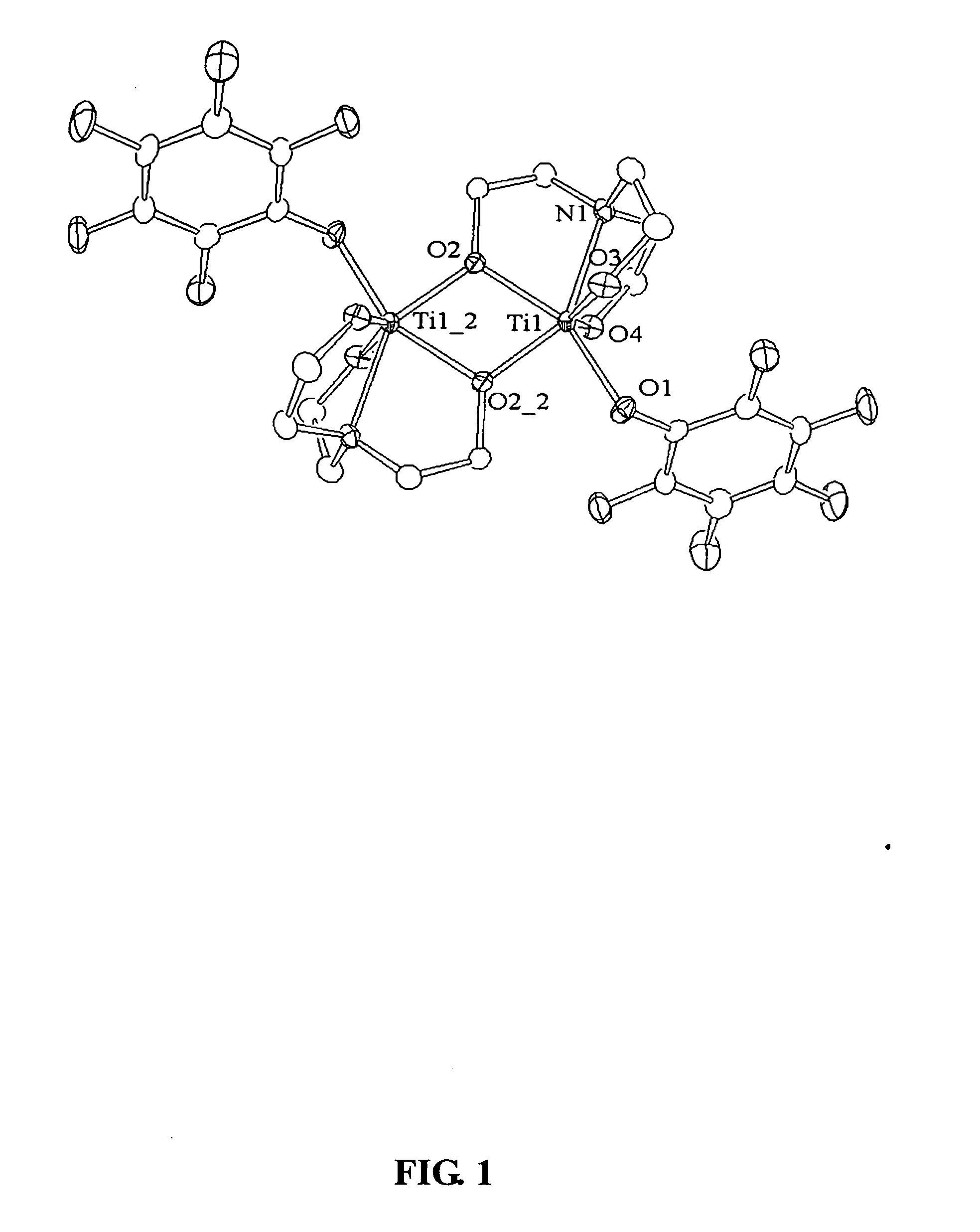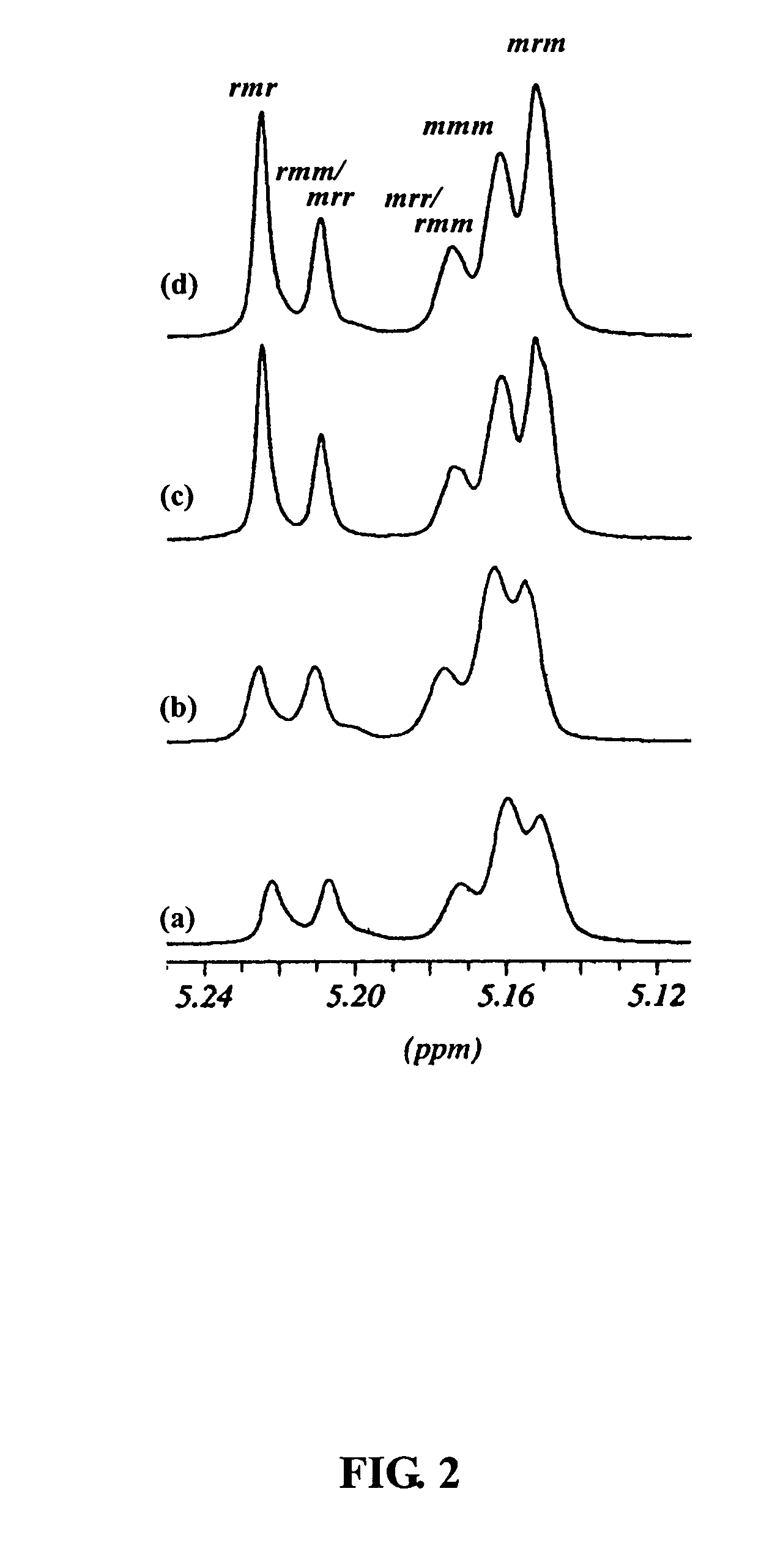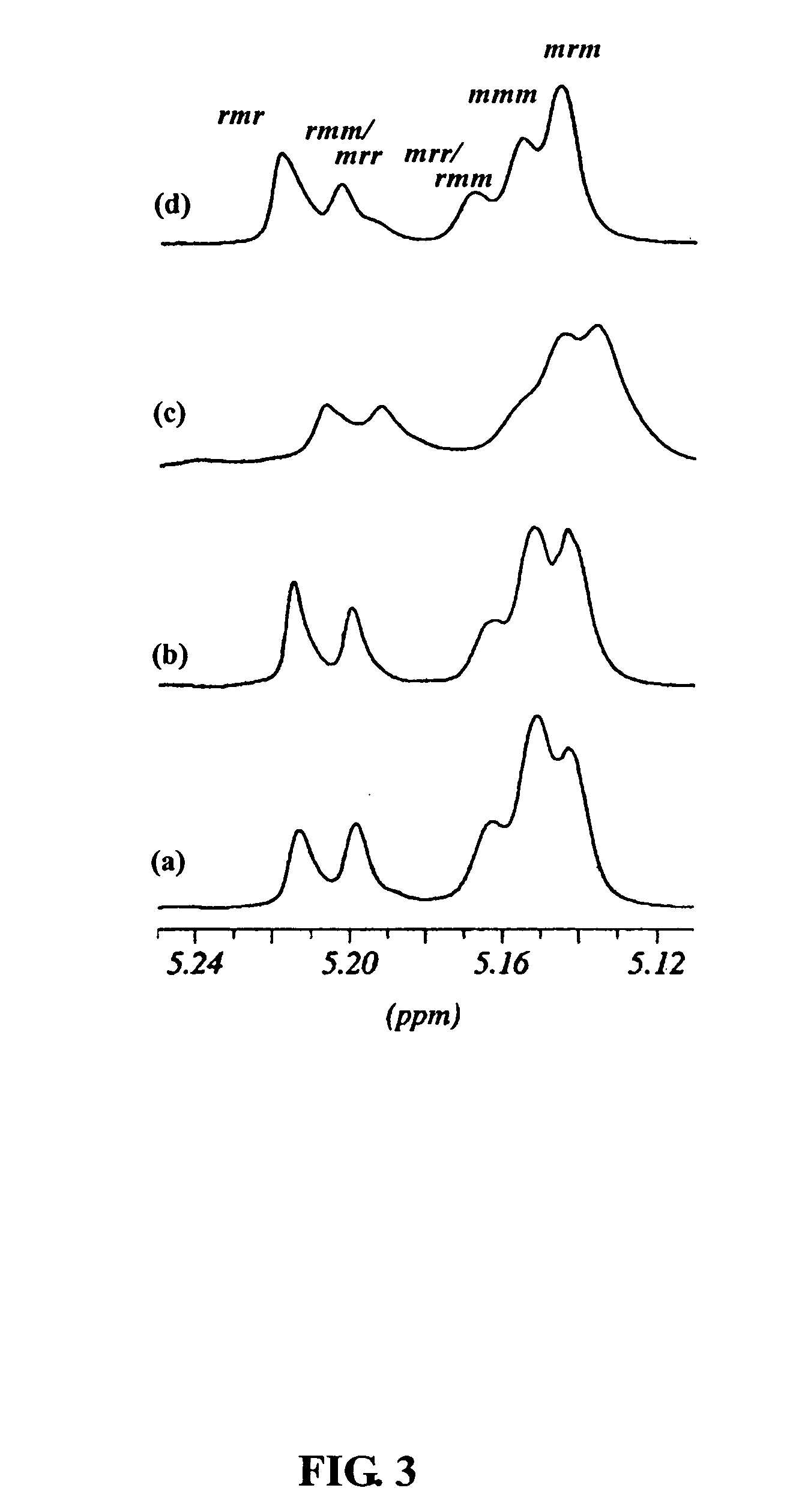Titanium alkoxide catalysts for polymerization of cyclic esters and methods of polymerization
- Summary
- Abstract
- Description
- Claims
- Application Information
AI Technical Summary
Benefits of technology
Problems solved by technology
Method used
Image
Examples
example 1
Materials Tested
Fourteen titanium alkoxides were synthesized for comparison of their catalytic properties in the bulk and solution polymerization of lactide (LA). The strategy employed for choosing candidate titanium catalysts 1-14 shown below are that they should contain alkoxide groups and the initiating alkoxide group should dissociate relatively easily from the titanium in the early stage of polymerization so that the titanium moiety can be utilized to initiate the polymerization of LA and provide a means of controlling the molecular weight by functioning as an end group. Alkoxy titanatranes seemed well suited to these purposes since they possess a transannular Ti—N bond that could potentially labilize the trans axial OR group for dissocation.
1Ti(O-i-Pr)42TiCl(O-i-Pr)33TiCl2(O-i-Pr)24TiCl3(O-i-Pr)Z5O-i-Pr67891011121314
General Consideration
All reactions were carried out under an argon atmosphere using standard Schlenk and glove box techniques. See, for example, D. F. Shri...
example 2
General Considerations
All reactions were carried out under an argon atmosphere using standard Schlenk and glove box techniques. See Shriver, supra. All chemicals were purchased from Aldrich and were used as supplied unless otherwise indicated. THF and toluene (Fischer HPLC grade) were dried and purified under a nitrogen atmosphere in a Grubbs-type nonhazardous two-column solvent purification system (Innovative Technologies) and were stored over activated 3 Å molecular sieves. See Pangborn, et al., supra. All deuterium solvents were dried over activated molecular sieves (3 Å) and were used after vacuum transfer to a Schlenk tube equipped with J. Young valve.
1H and 13C{1H}-NMR spectra were recorded at ambient temperature on a Varian VXR-400, VXR-300 or Bruker AC200 NMR spectrometer using standard parameters. The chemical shifts are referenced to the residual peaks of CDCl3(7.24 ppm, 1H NMR; 77.0 ppm, 13C{1H} NMR) and C6D6 (7.15 ppm, 1H NMR; 128 ppm, in 13C{1H} NMR). Elemental anal...
example 3
A new trinuclear titanium alkoxide 2 was synthesized according to the following method.
Synthesis and Discussion
Initially, a 1:1 ratio of 1 to Ti(O-i-Pr)4 was used, but a mixture of products was obtained. The same result was realized as the ratio of Ti(O-i-Pr)4 was increased, until the ratio of 1 to Ti(O-i-Pr)4 reached 1:2. It is interesting to note that even when an excess of Ti(O-i-Pr)4 was employed, only 2 was obtained as shown by the following spectra: 1H NMR (C6D6, 400.147 MHz): δ 7.47 (s, 6H, aryl-H), 7.30 (s, 2H, CH-aryl), 6.83 (s, 6H, aryl-H), 4.13 (m, 6H, CHMe2), 2.44 (s, 18H, aryl-Me), 2.18 (s, 18H, aryl-Me), 0.91 (d, J=6.1 Hz, 18H, CHMe2), 0.79 (d, J=6.0 Hz, 18H, CHMe2). 13C{1H} NMR (C6D6, 100.626 MHz): δ 161.0, 137.8, 132.4, 129.0, 128.9, 127.5 (aryl), 79.96 (OCHMe2), 37.62 (CH-aryl), 25.99 (CHMe2), 25.58 (CHMe2), 21.41 (aryl-Me), 18.22 (aryl-Me). Anal. Calcd for C68H92O12Ti3·⅓ toluene: C, 66.53; H, 7.48. Found: C, 66.90; H, 7.55.
The dropwise addition of 1 (1 g, 2...
PUM
| Property | Measurement | Unit |
|---|---|---|
| Temperature | aaaaa | aaaaa |
| Temperature | aaaaa | aaaaa |
| Time | aaaaa | aaaaa |
Abstract
Description
Claims
Application Information
 Login to View More
Login to View More - R&D
- Intellectual Property
- Life Sciences
- Materials
- Tech Scout
- Unparalleled Data Quality
- Higher Quality Content
- 60% Fewer Hallucinations
Browse by: Latest US Patents, China's latest patents, Technical Efficacy Thesaurus, Application Domain, Technology Topic, Popular Technical Reports.
© 2025 PatSnap. All rights reserved.Legal|Privacy policy|Modern Slavery Act Transparency Statement|Sitemap|About US| Contact US: help@patsnap.com



